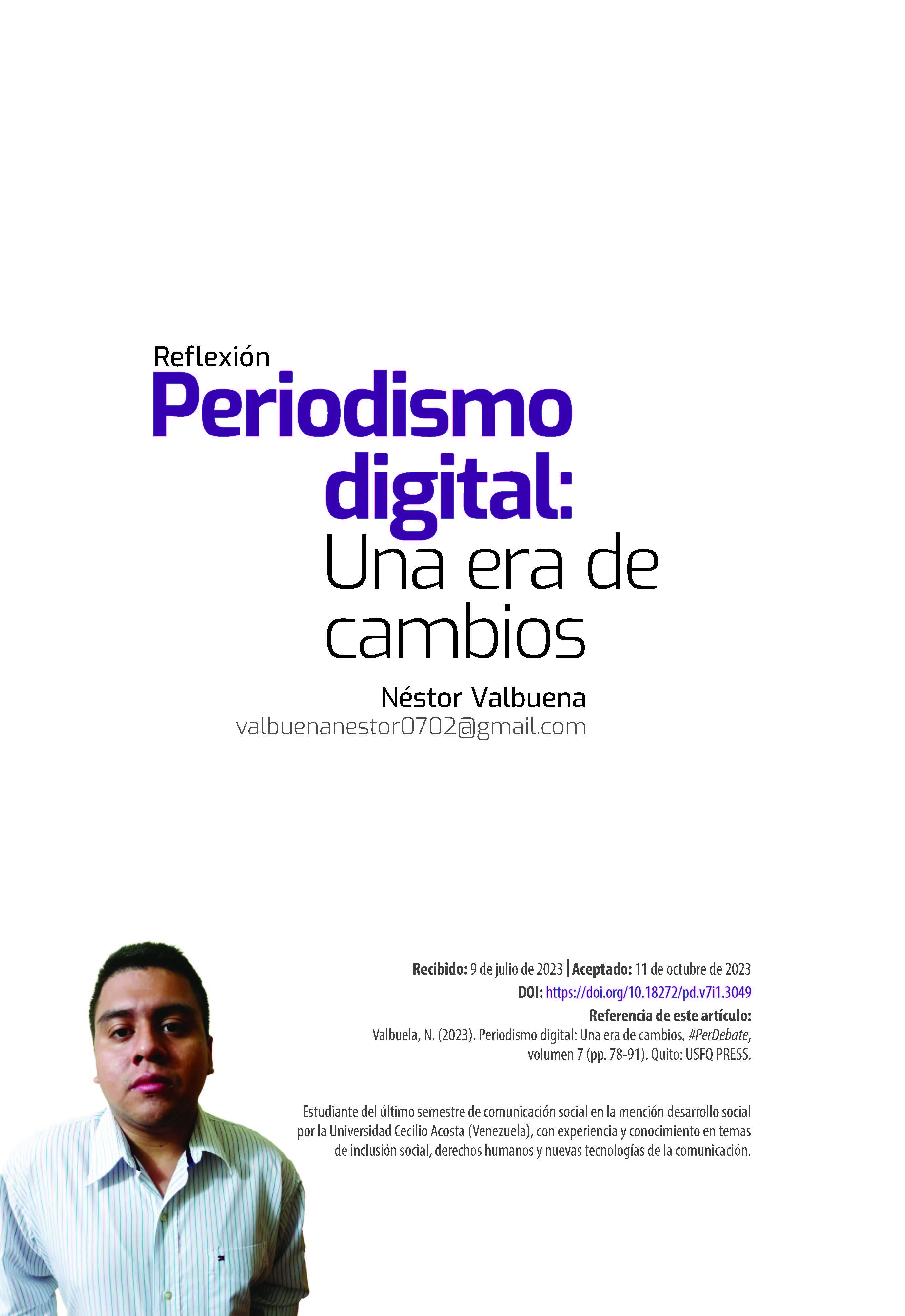Digital Journalism: An era of change in traditional journalism
Main Article Content
Abstract
This review article investigates and reports on the preliminary findings of an initial research process on Digital Journalism. The available information is known and explored, from the definition of the basic concepts, characteristics, obstacles and opportunities to analyze how Digital Journalism has been developing in the national context.
Also, a bibliographic review of different original articles as well as specialized magazines in communication that address and examine the main areas of scientific research on this topic from various approaches that allow a better understanding of the development of digital media in the last quarter century, the documentary exploration ends up confirming that digital journalism also known as cyberjournalism continues in an exponential progress that will continue to be the subject of scientific studies. Throughout the research we can see that digital journalism is a form of journalism that takes place in digital media, such as websites, blogs, social networks and mobile applications. According to some authors, digital journalism has several distinctive characteristics.
First, digital journalism is characterized by immediacy and speed. Journalists can publish news in real time and constantly update it as the story develops. This allows information to reach the public quickly and to be kept up to date at all times.
Second, digital journalism relies on interactivity and audience participation. Readers can comment, share and discuss news online, which creates a space for dialogue and citizen participation. In addition, journalists can use online surveys and forms to obtain the opinion and active participation of readers.
Third, digital journalism is characterized by its ability to offer multimedia content. Journalists can include photos, videos, infographics and other visual elements in their news to enrich the reader's experience and convey information more effectively.
Fourth, digital journalism relies on personalization and segmentation of content. Digital media can use algorithms and data analysis tools to deliver news and content tailored to the individual interests and preferences of each user.
Finally, digital journalism is characterized by its accessibility and global reach. Through the Internet, news can reach people around the world in real time. This allows stories to be known internationally and to generate debates and discussions at a global level.
In short, digital journalism is a form of journalism that takes place in digital media and is characterized by its immediacy, interactivity, multimedia content, personalization and global reach. This form of journalism has transformed the way information is produced and consumed, and has opened up new opportunities and challenges for journalists.
Article Details
References
Carrasco, G. y Naranjo, D. (2017). Periodismo digital en Venezuela: El dilema del tráfico y la calidad. Revista de Comunicación: Estudios venezolanos de comunicación 178, 33-38. http://comunicacion.gumilla.org/wp-content/uploads/2017/10/COM2017178.pdf
Chirínos, E. y Torres, L. (2014). Ciberperiodista: Nueva profesión en Venezuela. En A. Riera Ortiz. (Coord.), Avances de investigación en comunicación en Venezuela. Memoria IV Congreso de Investigadores Venezolanos de la Comunicación 2013. II Seminario de la cuenca amazónica de la Asociación Latinoamericana de Investigadores de la Comunicación “Comunicación y Desarrollo” (pp. 216-224). http://saber.ucv.ve/bitstream/10872/7442/1/235010092-Memoria-Invecom-2013.pdf
Flores I. (2017). La formación del periodista 2.0 en las universidades venezolanas. Revista ComHumanitas, 8(1), 42-60. https://dialnet.unirioja.es/descarga/articulo/6057565.pdf
Guirao-Goris, J. A., Olmedo Salas, A. y Ferrer Ferrandis, E. (2008). El artículo de revisión. Revista Iberoamericana de Enfermería Comunitaria, 1(1). https://www.uv.es/joguigo/valencia/Recerca_files/el_articulo_de_revision.pdf
Orejuela, M. (2015). Características del periodismo en línea venezolano: La interactividad y los cambios en las rutinas frente al reto de no sucumbir en el ciberespacio. Anuario Electrónico de Estudios en Comunicación Social “Disertaciones”, 8(1), 105-134. http://www.redalyc.org/articulo.oa?id=511553138007
Redondo Ramírez, I. (2017). ¿Cómo elaborar un artículo de revisión? Grafías Disciplinares de la Universidad Católica de Pereira (37), 1-71. https://doi.org/10.31908/grafias.v0i37.1210
Ruiz, E. (2013). El periodismo digital: La revolución de los contenidos. Escuela Superior del Diseño. https://gc.scalahed.com/recursos/files/r161r/w24588w/S4_rec01.pdf


